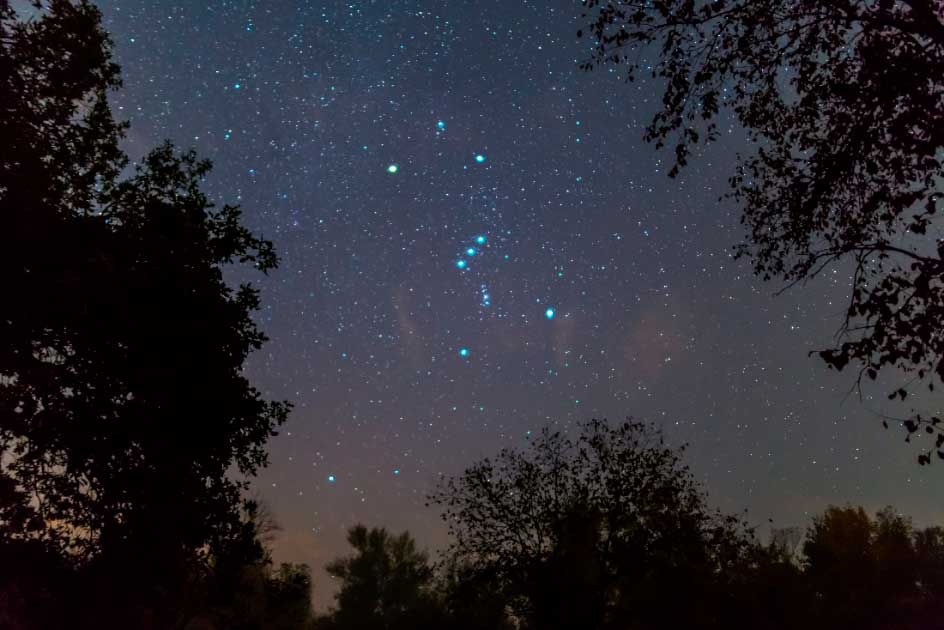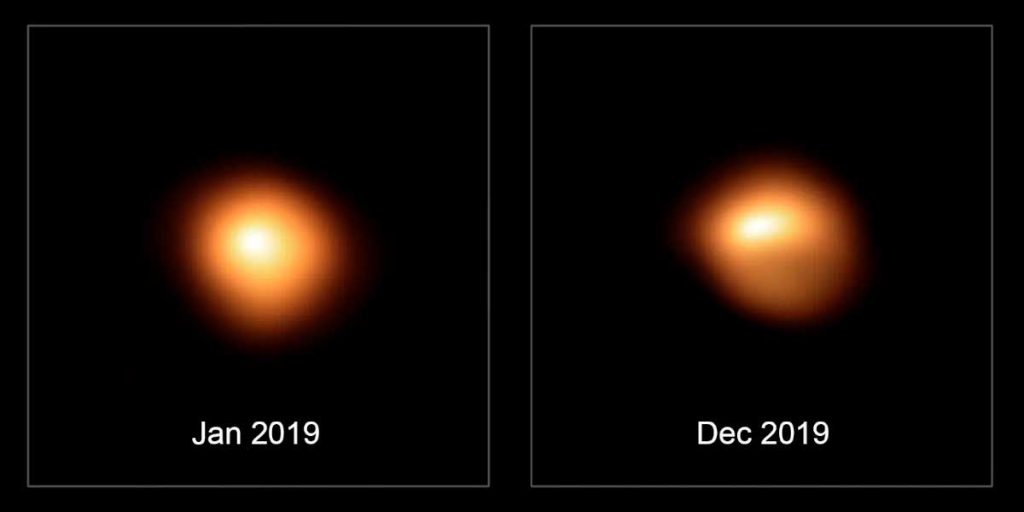Astronomers have been studying the stars and other extraterrestrial bodies for thousands of years. Their categorizing of the night sky and organization of stars into constellations provides a helpful framework to understand what we are seeing.
One of the largest, most distinct and most familiar of the constellations is that of Orion, the great hunter of myth. Standing tall, pulling a bow back and with a sword at his waist, this collection of large, bright stars is immediately recognizable.
But, recently, Orion changed. And from what we can tell, it may be for ever. For Orion is cornered by four bright stars, and perhaps the most interesting of these is Betelgeuse, the vivid red giant. But, in 2019, Betelgeuse disappeared.
What is the constellation Orion, and what is Betelgeuse?
The collection of stars into constellations is often one of the first childhood experiences of watching the night sky. Among the many prominent constellations that can be seen today, Orion, the Hunter, is probably the most visible one.
It is visible over the celestial equator and is instantly recognizable in the night sky. The constellation Orion has two of the brightest and stars in the sky, but they are very different from each other. You have the blue-white Rigel (Beta Orionis) and the dark red supergiant Betelgeuse (Alpha Orionis).

The red supergiant star traces the origins of its name to an Arabic word, which roughly translates as “the giant’s shoulder.” Interestingly, the name fits the red star perfectly as it figuratively forms one of the shoulders of Orion. The reddish star appears to keep changing size as it keeps pulsating and is one of the largest stars visible in space.
What Happened?
The Betelgeuse star created a lot of anticipation in space enthusiasts worldwide in late 2019. A noticeable drop in its intensity sparked discussions about the potential explosion of the star as a supernova. As a matter of fact, the red supergiant stars such as Betelgeuse only appear this way when they are quite close to their end of lives.
- The Mystery of the Pleiades: Where is the Seventh Sister?
- Tabby’s Star: Deep Space Mystery Never Seen Before
Therefore, many people were confidently expecting the bright flash of a supernova in the night sky as the red star started dimming gradually from late 2019 to March 2020. However, the star didn’t explode. On the contrary, it has regained brightness and dimmed again, followed by the same cycle once again.
Now, Betelgeuse is in a less active state and could exhibit more instances of dimming in the future. As of now, many people are asking questions about the ultimate explosion of Betelgeuse now that it is not a lost star of Orion anymore.
While everyone thinks about the possibilities of the star’s explosion and the magnificent sight of a supernova, it is important to know what the dimming actually means. Such explosions have always been portentous, and the destruction of Betelgeuse will change our sky forever.
However, it is important to find out the actual cause of Betelgeuse dimming if it was not about to explode. Apparently, the dimming of Betelgeuse was nothing to do with the star at all, but rather all down to dust. The Harvard Smithsonian Center for Astrophysics clarified the reasons behind the unprecedented dimming of Betelgeuse in a statement in August 2020.
The statement suggested that the Hubble Space Telescope had noticed hot convection cells on the star’s surface. Subsequently, the telescope identified a massive amount of dense hot gas circulating outwards through the star’s extended atmosphere.
Experts pointed out that the gas cooled down at a distance of millions of miles beyond the star to create dust. Apparently, the dust created was responsible for blocking the southern part of the Betelgeuse star, which was visible in January and February. Therefore, a dark cloud of gas cooling down into dust might have been the actual cause of the unprecedented dimming of the star.
Is Betelgeuse Still There?
If the dimming of Betelgeuse was an unprecedented phenomenon due to the dark cloud of gas and dust, then it is definitely there. Does it make the Betelgeuse star invulnerable? No, as the brightest stars in the sky draw their energy at a very costly price, and Betelgeuse is certainly one of the brightest.
The enormous energy required for bright stars implies the need for faster expenses of fuel. Therefore, the star would gradually run out of fuel and collapse under its own weight. Subsequently, the force of the collapse would result in the star rebounding in a supernova explosion. However, there is no specific time at which the Betelgeuse star would explode. Maybe you won’t get to see it in this lifetime, or you may witness it tomorrow.
The explosion of Betelgeuse, if it happens, will be one of the significant events in the night sky. An exploding star with a supernova can brighten the night sky with a blinding intensity for a few weeks or months. You may notice the Betelgeuse supernova burning with the same intensity as the full moon. It could also become visible during the daytime and will be a unique phenomenon to watch out for.

Some of you must be wondering about the casualness with which astronomers can speak of a star exploding. Won’t it cause any harm to life on earth? Interestingly, the Betelgeuse star is quite far away from causing any real damage to life on earth. All you would find is a spectacular sight of an extremely bright star in the night sky.
Until the star explodes, you can enjoy its beautiful view in the night sky. You can find the best place for viewing Betelgeuse according to the time of the year. The star features a distinct orange-red color which reflects the fact that stars can have colors. You can learn more about the mysteries surrounding the disappearance of stars and the factors which might have played a crucial role. The story of Betelgeuse exploding into a supernova turned out to be a false alarm. Let us wait to see if we can witness the supernova in our lifetime.
There is, of course, one more possibility. Light travels slowly across interstellar space, and were Betelgeuse to explode, we would not see it for hundreds of years. Betelgeuse may have already exploded, and one day will we see the light from this grand event.
Until then, we could be looking at a star that isn’t there.
Top Image: Could Betelgeuse have already exploded? Source: Lukszczepanski / Adobe Stock.
By Bipin Dimri